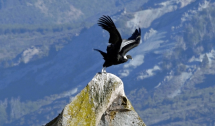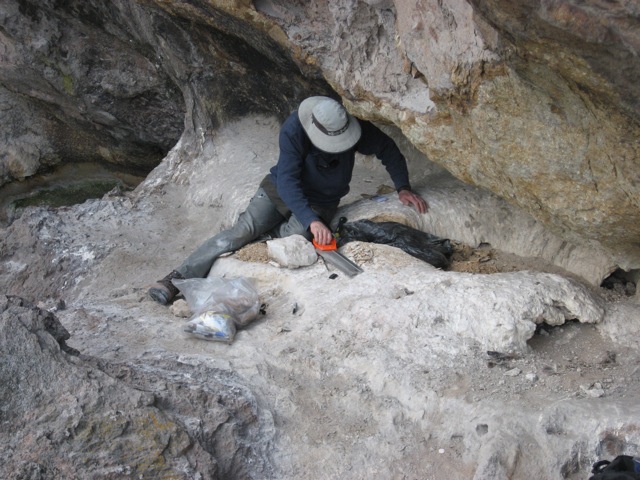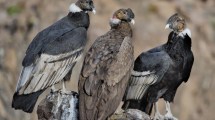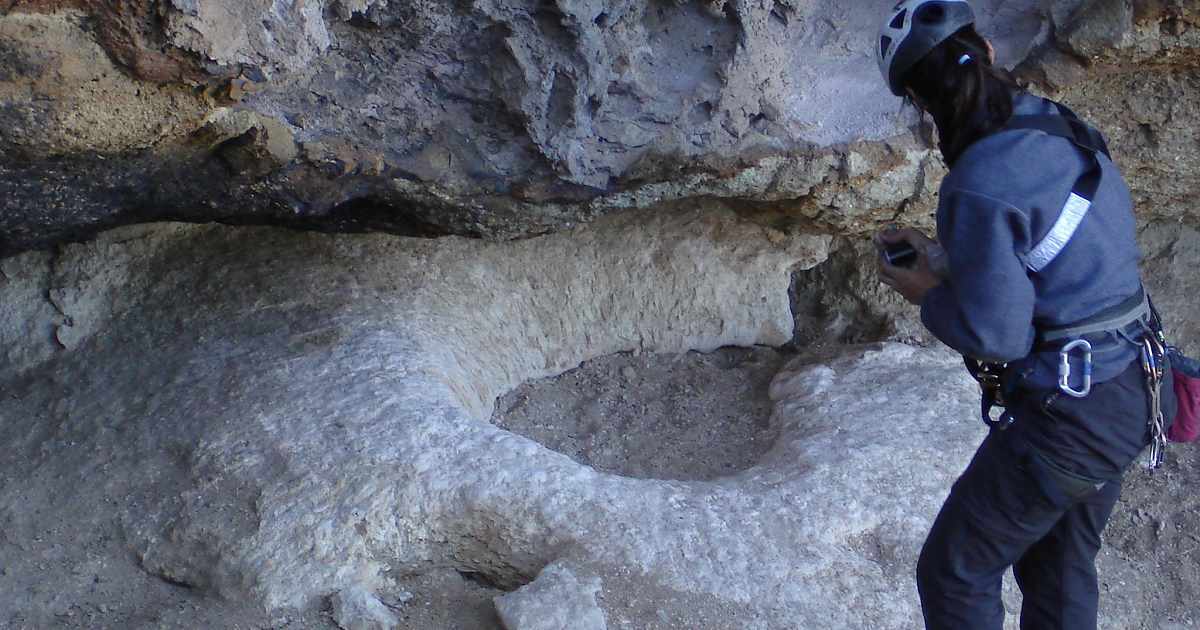Lorenzo Simpson is part of the third generation of an English family of bird watchers. He is a veterinarian and co-founded the Andean Patagonian Naturalist Society. More than 20 years ago, while running a biological station, she came across a nest that had a large accumulation of guano, which is formed by bird feces. “It was a bigger pile than normal and I found it interesting to study,” he told BLACK RIVER.

Time proved him right. This was the first moment of the discovery of the oldest Andean condor nest in the world. Simpson worked together with scientists such as Sergio Lambertucci, from Conicet and the Comahue National University, Julieta Massaferro, from the Argentine National Parks Administration (APN), and Matthew Duda and collaborators from Canada.
Through different techniques, They were able to identify that the nest that is located more than 1,100 meters high on a mountain within the Nahuel Huapi National Park has been used by condors for 2,200 years.
They determined this by studying guano samples from the site with techniques such as DNA sequencing and chemical analysis. The research was published in the journal Proceedings of the Royal Society B, of the United Kingdom.
Normally the guano is detected as a paint on the stone. Instead, in the case that was studied, there was a layer of about 25 centimeters of guano around the nest. One of the biologists from Queen’s University in Canada was in charge of climbing up to the nest and taking samples of the guano. “It was not known before that condors use the nest continuously,” Sympson said.

threatened birds
With a wingspan of more than 3 meters and the weight of a small child, Andean condors are the largest birds of prey. They inhabit along the Cordillera de los Andes. They are the ultimate symbol of American wildlife. and national bird of Bolivia, Chile, Colombia and Ecuador. It is estimated that only 6,700 copies remain. They are affected by mass poisonings.

The group of researchers carried out a paleobiology study, which is the discipline that studies organisms from the past and makes it possible to determine the time when an organism became fossilized.
“In this case, the cave where the nest was located is protected from bad weather. The chick usually defecates on its own nest and generates like a pot. That pot was so big, it had so much accumulated feces that it drew attention because, in general, they are disarmed ”, explained Lambertucci.
They made a cross section in that kind of column of sedimentary rock of feces and extracted samples from the bottom up to date each one of those parts.
Through different dating techniques, diet studies by stable isotope analysis, genetic studies and metal analysis, it was possible to know that this nest had been used for 2,200 years. The researchers were also able to understand what the condors were eating and what pollutants they were exposed to over time.
“The condors used the nest for a long time. But there was a period of almost a thousand years when they stopped using it or reduced its use. We believe that it has to do with a period of volcanic activity in the area. That may have reduced the amount of food in the area,” Lambertucci said.
The Conicet scientist also commented on another more recent situation. “In 2011, with the ash fall of the Caulle Puyehue range, a lot of vegetation was lost, and the soil was made of volcanic ash, so many herbivores died or had to move to other places,” said the INIBIOMA researcher.
After the great volcanic activity, which made the area hardly habitable, the condors returned to nest more continuously in the same nest. This suggests that the site chosen for the nest is very important.
“All this denotes the importance of nesting sites. Condors are philopatric animals: they return to the area where they were born and return to nest. They choose places that have value for the species. For this reason, after abandoning him, they elect him again,” said Lambertucci.
Diet changes
The study also served to understand the change in the diet of the Andean condor. Thousands of years ago, they had a broader diet than today. They ate land animals but also marine resources from the coast of the current territory of Chile, such as stranded whales and sea lions. Today, however, their diet is “more terrestrial” and they are limited to consuming herbivores from the steppe.
“In recent years, the condor’s diet in this area is mainly based on domestic cattle or exotic species, such as red deer or hares,” he said.
Another point of the study was the exposure of condors to metals, such as mercury or lead, which are associated with human activity.
“Humans brought in some contaminants, such as lead from bullets or mercury, and that shows up in the recent samples we tested. In the past, the levels of these metals were very low, and they have increased in recent times.”Lambertucci said.
These results are a clear call to control the use of these metals. The use of lead bullets should be eliminated and replaced with less toxic alternatives such as steel bullets.
The value of the find

The discovery of an Andean condor nest from more than 2,200 years ago and its frequent use since then has several implications for better conservation management. According to the scientist Sergio Lambertucci, it allows “a greater appreciation of nesting sites, taking them into account for any management plan and understanding how humans have impacted the diet and contamination of birds in the last hundred years.”
All the information is essential to better understand the ecology of the bird and establish measures that favor its conservation.

Supporting quality journalism is essential to maintain an informed society and build a solid democracy.
I want to subscribe
